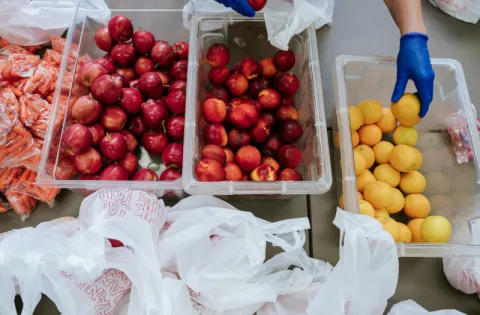The United States Department of Agriculture (USDA) released their annual look at food security this morning in a report titled “Household Food Security in the United States in 2021.” It’s key finding: Although the United States still faced the health and economic crisis brought by the pandemic through 2021, the number of kids facing hunger dropped dramatically.
In 2021, 9 million children in the United States lived in a household considered “food insecure,” or 1 in 8 kids. Not only is this a substantial drop from both 2019 and 2020, it’s also the lowest number on record since the USDA started tracking this in 1998.
Unfortunately, it appears that this drop was also temporary, as all signs point to food insecurity once again being on the rise in 2022.
First, a look at why the numbers in 2021 were so low. During that time, the federal government temporarily expanded nutrition programs to address pandemic-era need, including an enhanced Child Tax Credit (available to parents in monthly allotments), expanded SNAP benefits and Pandemic EBT and waivers that allowed schools and community organizations to adapt their programs and reach more families. These are programs and policies at the very core of the No Kid Hungry strategy, and this report shows that these programs do work at combating hunger.
But despite the huge improvement in the numbers - which measure food insecurity from a year ago - we believe the reality is much worse for kids today. Since January, most of those enhanced support programs that helped families avoid hunger and poverty last year have come to an end. At the same time, inflation and ongoing supply chain issues mean everything from food to school clothes to diapers are more expensive.
As a result, data shows food insecurity in 2022 is again on the rise. To see what a more accurate representation of what hunger looks like today, we turn to the Census Pulse Survey. This survey tracks whether families feel they had enough to eat over the past week and, while not exactly the same as the USDA survey, it provides a helpful snapshot of households' experience accessing food. The news isn’t good. The most recent report shows an upward trend in hunger, with 12.1 million families with kids reporting not having enough to eat. (In December 2021, that number was 9.7 million.)
The bottom line? First, the pandemic taught us there are policies and programs this nation can implement to reduce child hunger in this nation. And second, it’s time to roll up our sleeves and address the need as it exists today. No Kid Hungry is proud to work alongside elected leaders, funders, schools, and community leaders to help kids get the healthy food they need.



